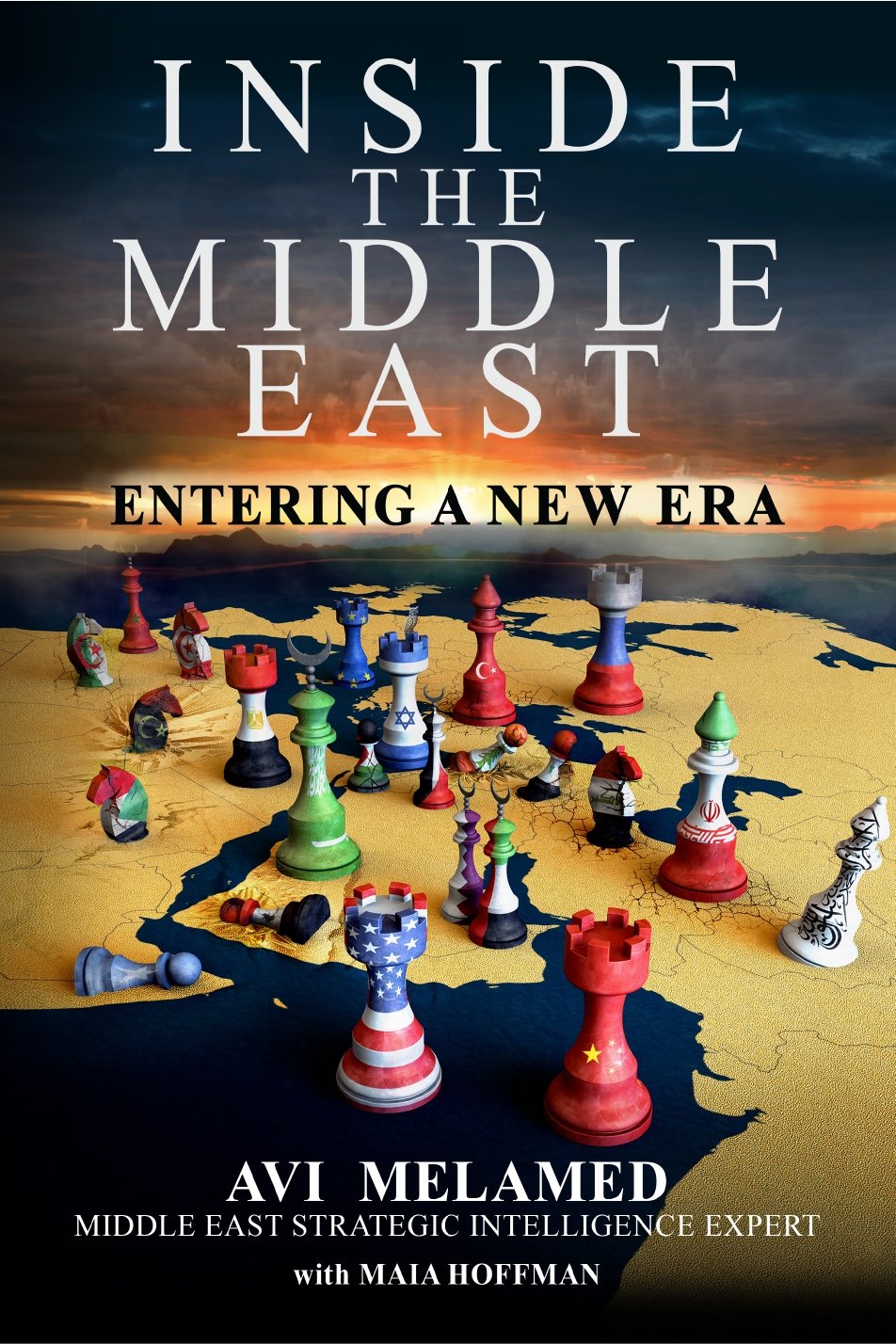|
Getting your Trinity Audio player ready...
|
Trump Says He Can End the Gaza War – This Is His Plan | Avi Melamed’s insights quoted in this article by Virag Gulyas, Originally published in THE EUROPEAN CONSERVATIVE
Virag Gulyas is a journalist and commentator who champions common sense and conservative values. She covers global security, immigration, human rights, and cultural issues. A survivor of two terrorist attacks in Europe, she delivers raw, honest insights on extremism and its impact on Western society. Having lived in five countries, she currently resides in New York City.
Generations have grown up learning mathematics through counting dead Jews. Now, Donald Trump claims he can end the arithmetic of hatred.
His newly unveiled 20-point peace plan for Gaza has ignited fierce debate across the world. Far from uniting people, it has thrown social media into familiar chaos. Palestinian influencers cling to the slogan “from the river to the sea” instead of acknowledging that an alleged “genocide” could finally end. Jewish influencers, tired from years of psychological terror, wonder if anything will truly change.
Yet, somewhere in between these extremes lies a rare possibility: Trump’s plan—detailed, transactional, and unmistakably hard-nosed—could be the most pragmatic framework yet to end this endless war. It is not a PR stunt. It is a blueprint that balances Israel’s security with Palestinian survival, aiming to replace vengeance with enforceable peace.
The Abraham Accords demonstrated Trump’s ability to broker significant change, primarily with the United Arab Emirates recognizing the existence of a Jewish state. Yet the current peace plan faces greater challenges, as Hamas is notorious for ideological rigidity and opportunistic tactics.
Avi Melamed, geopolitical expert, emphasized in a phone call how this plan has reinvigorated Arab engagement. “Since Hamas took control of Gaza in 2007, the Arab world largely stood on the sidelines. The broad regional support now is highly significant and will shape the plan’s trajectory.”
Trump’s initiative outlines clear demands. Hamas must release all hostages. Gaza must undergo complete demilitarization and deradicalization. Hamas cannot govern the area anymore. Simultaneously, Gazans cannot be forcibly removed. Israel must withdraw from Gaza, and an International Board of Peace would oversee Gaza’s political transition and reconstruction, relieving Israel of the sole burden of security.
It is important to remember that before October 7, Israel had no presence in Gaza. Following the full withdrawal in 2005, when Jewish families were forcibly removed in hopes of peace, Gaza has not been occupied by Israel. Simultaneously, while this peace initiative calls for international support in rebuilding Gaza, it is worth noting that in 2005, Gaza had the potential to become the “Dubai of the Mediterranean.” Its leaders, however, chose terror over prosperity.
A cornerstone of the proposal is the International Board of Peace, tasked with overseeing Gaza’s political transition and reconstruction. An International Stabilization Force, composed of vetted Palestinian police units supported by Jordan and Egypt, with U.S. and Israeli logistical backing, would maintain order.
Hamas, unsurprisingly, has not rushed to sign the agreement. Negotiating with terrorists always involves uneasy compromises, and Hamas has already attempted to buy time by claiming they need to locate hostages or bodies. Nevertheless, the plan has garnered broad international support, from Qatar, Jordan, Egypt, Saudi Arabia, Turkey, Pakistan, Indonesia, the United States, and Palestinian Authority President Mahmoud Abbas, all pressuring Hamas to accept the deal. And it eventually did just that.
Yet Hamas remains the most significant challenge. Its history of revoking agreements and using psychological tactics, such as creating uncertainty over hostages’ fates, casts doubt on its commitment to implement the plan fully. Even more challenging is the ambitious goal of deradicalization, targeting Gaza’s education, religious, and media institutions. The situation is so severe that even the anti-Israel UN acknowledged that UNRWA’s school curriculum included materials glorifying violence, including math problems counting “dead Jews.”
For lasting peace, an ideological shift is indispensable. Hamas’s religious absolutism, rooted in its 1988 charter calling for Israel’s destruction, rejects coexistence. This mindset is still evident two years after October 7, as just a few days ago in New York City, a pro-Palestinian protester chanted, “We did not act enough. We will show up stronger than we did on October 7.”
A survey by the Palestinian Center for Policy and Survey Research from May 2025 underscores just how deep the problem runs. 50% of Palestinians believe Hamas’s October 7 attacks were justified, 77% oppose Hamas disarming, and 61% view violence as a legitimate political tool. These figures reveal the depth of ideological entrenchment, making deradicalization a daunting task.
The ultimate question remains. How can a mindset built on hatred—one that begins with Jews but never stops there—ever be changed?
Trump’s goal is to end the cycle of wars that define Gaza. His approach recognizes that the Middle East operates on tribal and religious dynamics, not liberal ideals. But can a peace plan succeed while Hamas’s core mission is the destruction of Israel?
At the time of writing, the plan is set in motion. Hamas has 72 hours to release all living hostages. In return, Israel would release 1,700 Gaza residents detained post October 7 and 250 Palestinians serving life sentences. Israeli estimates suggest 20 hostages remain alive, 28 are presumed dead, and Hamas claims uncertainty over nine others.
Itai Reuveni, Director of Communications at NGO Monitor and IDF combat reservist, shared in a phone conversation that he is cautiously optimistic.
“Hezbollah, Syria, and Iran are no longer existential threats. Most of Gaza’s power is gone. Strategically, Israel achieved what it needed. Hamas is no longer a functioning terrorist force.” He also noted that “Europe’s absence from the diplomatic process is striking. Once a major player, Europe has become largely irrelevant in Middle Eastern affairs, sidelined by internal crises and anti-Israel sentiment.”
We must also recognize a broader truth. Even if the peace plan succeeds in the Middle East, Europe is already home to many who support Hamas’s ideology. After October 7, the West’s response exposed an apparent moral dissonance. Among others, feminist and LGBT groups rallied behind Hamas, a group that oppresses women and criminalizes homosexuality. This hypocrisy reflects an old pattern—using supposed moral causes as a cover for blaming Jews. Sadly, in 2025, antisemitism, rebranded as anti-Zionism, remains a persistent challenge.
Despite pessimism, Trump’s 20-point plan introduces hope grounded in realism. It rejects coexistence with an unreformed Hamas and seeks to rebuild Gaza free of jihadist ideology. The plan’s success depends on dismantling Hamas and unapologetically pushing for an ideological shift—a monumental task given the deep-rooted hatred that starts with Jews but ultimately endangers everyone.
The road to lasting peace in Gaza is long and uncertain. Still, Trump’s 20-point plan offers a framework grounded in realism, accountability, and a chance to finally break the cycle of violence.
Trump Says He Can End the Gaza War – This Is His Plan | Avi Melamed’s insights quoted in this article by Virag Gulyas, Originally published in THE EUROPEAN CONSERVATIVE
Key Takeaways
- Trump unveils a 20-point plan to end the Gaza War, aiming for a pragmatic peace by balancing Israel’s security and Palestinian survival.
- The plan demands Hamas release hostages, undergo demilitarization, and ends its governance in Gaza.
- International support for the plan has notably increased, but Hamas poses significant challenges due to its ideological steadfastness and history of revoking agreements.
- An ideological shift in Gaza is crucial for lasting peace, as current attitudes among Palestinians show strong support for violence.
- Despite skepticism, Trump’s initiative introduces hope for rebuilding Gaza, free from jihadist ideology, in the pursuit of ending ongoing violence.
If you want to have a better understanding of the news and what really drives the unfolding events… Read the latest book of Avi Melamed,
INSIDE THE MIDDLE EAST | ENTERING A NEW ERA, available now >>>
Follow me on Twitter @AviMelamed; Facebook @InsideTheMiddleEast; for more Videos on YouTube https://www.youtube.com/c/AviMelamed
I can always be reached at Av*@********ed.com
































































